A visit to the Châteauneuf-du-Pape wine region is a must for wine enthusiasts with a passion for Rhone wines, especially Grenache, Syrah and Mourvedre blends. In this guide, learn about some of the top wineries to visit in Châteauneuf-du-Pape and some of the flavors and experiences you can expect to encounter.
Taking a journey to Châteauneuf-du-Pape in the heart of the Rhône Valley opens a gateway to one of the most fascinating wine regions in the world. This charming village, steeped in history since the 14th century, has long been revered for its exceptional Châteauneuf-du-Pape wines. The region, with a wide range of vineyards, distinct terroir and unique natural heritage, calls #Winetravelers to explore everything from wine tastings to historical sites and local cuisine. The essence of Châteauneuf-du-Pape lies not only in its wines but in the profound history and culture that envelop the area, especially its connection to Pope John XXII who established a summer residence here, marking the beginning of the area’s vinicultural significance.
Getting to Châteauneuf-du-Pape is a journey that rewards the traveler with scenic views and a sense of anticipation. The closest international airport is in nearby Avignon (check flights for your preferred dates here using Skyscanner), just a short drive away, positioning it perfectly for a memorable day trip or an extended stay.
From Avignon, visitors can easily rent a car or take advantage of local transportation networks to reach this wine lover’s haven. On your way, you’ll travel through the rolling hills of the Côtes du Rhône, dotted with vineyards and historical landmarks.
The Best Wineries to Visit in Chateauneuf-du-Pape
For those keen on discovering the wine culture of the Chateauneuf du Pape region, we’ve listed out the best wineries to visit, ranging from well-known and historic establishments to more boutique family-run vineyard operations. These include but are not limited to the iconic Château de Beaucastel, known for its robust reds and elegant whites; Domaine de Beaurenard, where traditional winemaking meets modern elegance; and Château La Nerthe. Other must-visit estates include Clos des Papes, renowned for its complex and harmonious blends; Domaine du Pegau, where the essence of the region’s flagship appellation is captured beautifully in each bottle; and Château des Fines Roches, not just for its wines but also for its unique setting that combines vineyards with historical architecture.
Each winery offers a unique tasting experience, from private wine tastings and tours set in the unique backdrop of an old cave or amidst the ruins of the pope’s “new castle.”
Domaine de Beaurenard
10 Av. Saint-Pierre de Luxembourg, 84230 Châteauneuf-du-Pape, France
Domaine de Beaurenard has a storied legacy that spans over eight generations, with a commitment to showcasing the essence of Châteauneuf-du-Pape’s terroir through biodynamic practices. The Coulon family, including brothers Daniel & Frédéric along with Daniel’s sons Victor and Antonin, steward more than 80 acres of certified biodynamic vineyards. Their portfolio includes a range of wines, from the balanced and nuanced blends typical of the region to the distinct “Gran Partita,” first introduced in 2012, featuring a high percentage of Grenache and aged in both old foudres and cement tanks. Domaine de Beaurenard’s white wines exhibit the diversity and richness of the estate, particularly the “Boisrenard Blanc,” crafted from vines over 70 years old.
Domaine Mayard
24 Av. Baron le Roy, 84230 Châteauneuf-du-Pape, France
Vignobles Mayard is a family-run winery with deep roots in Châteauneuf-du-Pape, now in its sixth generation. Managing 43 hectares of organically cultivated vineyards across the appellation’s diverse soils, the Mayard family produces several wines, including the vibrant and fruity “Clos du Calvaire” and the elegant “La Crau de ma Mère.” Their dedication to quality and tradition is evident in the careful blending and aging of their wines, aiming to express the unique character of each vintage.
Chateau Fortia
10 Rte de Bédarrides, 84230 Châteauneuf-du-Pape, France
This estate, under the stewardship of the Le Roy de Boiseaumarié family since the early 20th century, has played a pivotal role in defining the appellation’s standards. Baron Pierre Le Roy de Boiseaumarié, a figure instrumental in the establishment of the Appellation d’origine contrôlée (AOC) system, transformed Château Fortia into a symbol of quality and heritage in French winemaking.
The vineyard encompasses a varied terroir that includes sandy soils in the north and clay-limestone in the south, adorned with the characteristic large galets roulés stones, ideal for the cultivation of Grenache, Syrah, and Mourvedre for their red blends, and Clairette blanc, Roussanne, and Grenache blanc for the whites. The Château itself, a neo-Gothic marvel adjacent to ancient wine cellars dating back to the 14th century, invites Winetravelers to explore the depth of its history and the breadth of its vinicultural achievements.
Château Fortia is not just about the wines but also about the experience. The estate provides educational cellar tours and tastings, where guests are welcomed into the intricate world of wine production unique to the region. These visits are often highlighted by insights into the estate’s historical significance and the evolution of winemaking practices that have shaped the Châteauneuf-du-Pape appellation.
Domaine du Pegau
15 Av. Impériale, 84230 Châteauneuf-du-Pape, France
Domaine du Pegau has a profound history rooted in the Châteauneuf-du-Pape region, with the Féraud family’s involvement in farming dating back to 1670. The domaine itself came into existence in 1987 when Laurence Féraud and her parents decided to establish an independent family estate. The name “Pegau” is derived from an ancient wine jug, symbolizing the family’s deep connection to traditional winemaking. Laurence, who had returned to Châteauneuf-du-Pape with a background in wine studies, played a pivotal role in the domaine’s international recognition. By 1992, Domaine du Pegau’s reds were ranked among the top three wines, marking a significant milestone that paved the way for global distribution and expansion, including the acquisition of Château Pegau in 2012.
The domaine is renowned for its adherence to traditional winemaking practices, as evidenced by the lack of modern machinery and the use of ancient oak barrels for aging. Laurence and her father, Paul, champion a hands-on approach, involving the entire family in the vineyard and winery operations. Domaine du Pegau is celebrated for producing wines that embody the essence of Châteauneuf-du-Pape, with their Cuvée Reservée and Da Capo being particularly notable. These wines are crafted from old vines, primarily Grenache, and are known for their intense mineral quality and powerful tannins, promising longevity and a profound evolution with age.
Château Rayas
84350 Châteauneuf-du-Pape, France
Château Rayas stands out with its unique single vineyard of 32 acres, initially acquired by Albert Reynaud in 1880. Despite the challenges of the phylloxera epidemic, the vineyard was revitalized and produced its first wine in 1920 under Louis Reynaud. Today, Château Rayas is revered, especially in American wine circles, thanks to Emmanuel Reynaud’s stewardship. The flagship Grenache wine, grown on sandy clay soils without the presence of the typical rounded stones, is celebrated for its traditional production methods and exceptional quality.
Ogier Clos de l’Oratoire des Papes
10 Av. Louis Pasteur, 84230 Châteauneuf-du-Pape, France
Ogier Clos de l’Oratoire des Papes, distinguished from its Saint-Emilion namesake, was acquired by Ogier in 2000. The estate, known for its historical 1926 label design, spans 62 acres across all three of Châteauneuf-du-Pape’s soil types. Since the acquisition, Ogier has transitioned to organic farming and has seen significant improvements under wine director Didier Couturier. The wines, predominantly Grenache, are known for their aromatic qualities and are produced using fully destemmed grapes, aging in large used oak barrels.
RELATED: These Are Some of the Best and Most Famous Wineries to Visit in Bordeaux
M. Chapoutier
18 Avenue Dr Paul Durand, 26 600 Tain-l’Hermitage, France
M. Chapoutier represents a significant chapter in the Rhône Valley’s winemaking history. Since its establishment in 1808, the Chapoutier estate has embraced biodynamic farming and minimal intervention in the winemaking process. The estate produces seven Châteauneuf-du-Pape labels, with the Barbe Rac and Croix de Bois standing out for their 100% Grenache composition. These wines are noted for their natural fermentation and extended aging, either in oak barrels or concrete vats, depending on the cuvée, resulting in wines that are expressive and capable of aging gracefully.
Château de Beaucastel
Chem. de Beaucastel, 84350 Courthézon, France
Château de Beaucastel is a bastion of winemaking history and innovation, renowned for its comprehensive embrace of biodynamic farming practices long before they became a trend. Situated in a unique microclimate that benefits from the cooling effects of the Mistral wind, the estate has been a pioneer in the region for its holistic approach to viticulture. Each of the 13 permitted grape varieties in Châteauneuf-du-Pape finds a home here, allowing for a complex and layered expression of the terroir. Beaucastel is particularly noted for its use of a high proportion of Mourvèdre, giving its wines a distinctive depth and structure. The estate’s commitment to traditional winemaking methods, combined with a relentless pursuit of quality, has cemented its status as a leading producer in the appellation. Visitors can expect to explore a rich history, a vibrant present, and a commitment to the land that shines through in every glass.
Château La Nerthe
4213 Rte de Sorgues, 84230 Châteauneuf-du-Pape, France
Château La Nerthe stands as one of Châteauneuf-du-Pape’s venerable wineries, with its roots tracing back centuries. The estate prides itself on a combination of historic winemaking tradition and a forward-thinking approach to sustainability. Its vineyards are cultivated under organic practices, ensuring that every bottle reflects not only the rich history of the estate but also a commitment to environmental stewardship. The wines of La Nerthe are known for their elegance and complexity, a result of the careful blending of various grape varieties that highlight the versatility of the appellation’s terroir. With a reputation for producing some of the most refined and structured wines in Châteauneuf-du-Pape, Château La Nerthe offers visitors an immersive experience that connects the past with the present.
Clos des Papes
Av Pierre de Luxembourg, 84230 Châteauneuf-du-Pape, France
Clos des Papes is a small, family-owned winery that has earned acclaim for its meticulously crafted wines, embodying the essence of Châteauneuf-du-Pape. The estate’s approach to winemaking is deeply rooted in tradition, focusing on minimal intervention to allow the natural characteristics of the grapes and the terroir to shine through. Their wines are celebrated for their balance, complexity, and aging potential, showcasing the best of what the appellation has to offer. The commitment to quality and tradition at Clos des Papes has resulted in consistently high ratings and respect within the wine community. For visitors, Clos des Papes represents an opportunity to experience the dedication and passion of a family deeply connected to the land and its history.
Hostellerie du Château des Fines Roches
1901 Rte de Sorgues, 84230 Châteauneuf-du-Pape, France
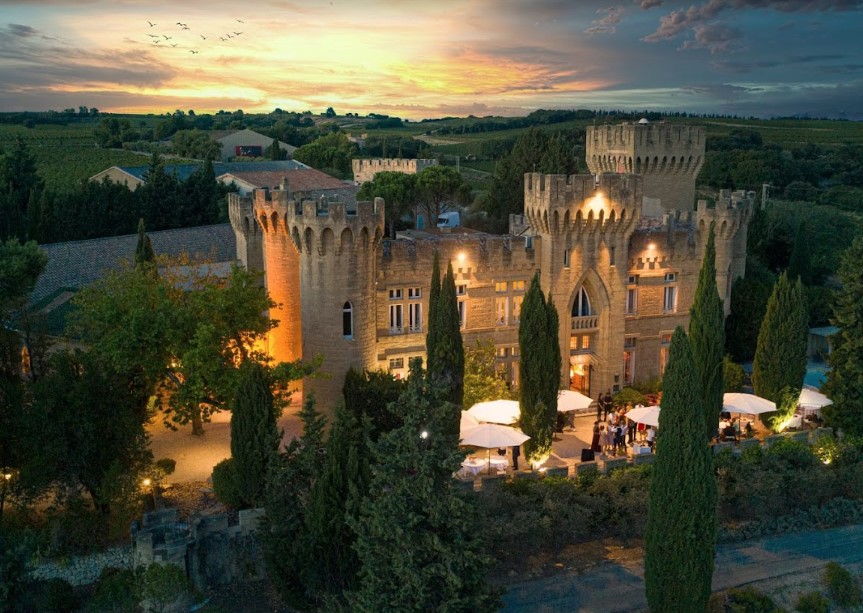
Perched majestically in the landscape of Châteauneuf-du-Pape, Château des Fines Roches marries winemaking excellence with architectural splendor. The castle, once a haven for poets and writers, now is a symbol of the region’s rich heritage. The vineyards surrounding this historic château are tended with a focus on producing wines that are both expressive and reflective of the unique terroir. Visitors to Château des Fines Roches are treated not just to exceptional wines but to breathtaking views that span the Rhône Valley. In fact, you we suggest you use this as your homebase for exploring Chateauneuf du Pape if you want to stay in a castle surrounded by the stunning vineyard landscape.
Book a Hotel Stay at Chateau des Fines Roches
Le Clos du Caillou
1600 Chem. de Saint-Dominique, 84350 Courthézon, France
Le Clos du Caillou embodies the harmony between nature and winemaking, practicing organic and biodynamic viticulture to craft terroir-driven wines of distinction. The staff at the estate firmly believe that the health of the vineyard directly translates to the quality of the wine. Tucked within the diverse landscapes of Châteauneuf-du-Pape, Le Clos du Caillou’s vineyards are a patchwork of distinct soil types, each contributing unique characteristics to the wines. The estate’s commitment to minimal interventionist practices both in the vineyard and the cellar ensures that each bottle is a true expression of the land. For visitors, Le Clos du Caillou offers an insightful look into the benefits of organic and biodynamic farming, all while enjoying wines that are vibrant, complex, and reflective of the estate’s unique setting.
Top Wine Tours to Book in Châteauneuf-du-Pape
Participating in Châteauneuf-du-Pape wine tours is an unparalleled way to connect with the land and its traditions. Options range from full-day tours that explore the heart of the village and its vineyards to afternoon tours designed for those with limited time but an unquenchable thirst for knowledge and flavor. The tours we recommend below are led by passionate local guides who provide local insights into the distinct terroirs, the blend of different grapes, and the meticulous winemaking process that defines the wines of the appellation. Each Chateauneuf du Pape wine tour also comes with free cancellation, and reserve now and pay later options, allowing for flexibility in planning your exploration of this storied wine region.
Chateauneuf du Pape Wine Tour from Avignon Led by a Sommelier
Tour Operator: Provence and Wine
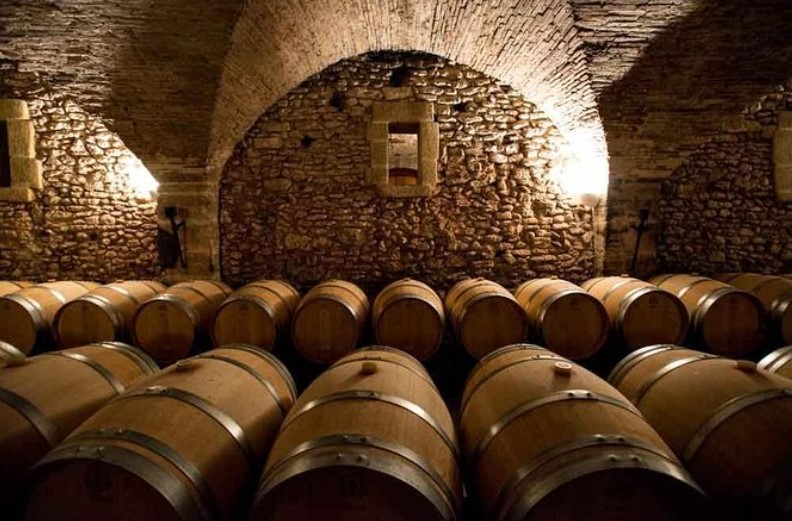
Throughout the day, you will explore four distinguished estates, family-run operations and wine castles, each offering a unique glimpse into the winemaking traditions and innovations that make the wines of this area so esteemed. Winetravelers should anticipate a scenic journey from Avignon to Châteauneuf-du-Pape, with transportation times ranging between 30 minutes to an hour, allowing for a serene transition through the picturesque Provencal countryside to the vineyard landscape of CDP.
This tour offers an unparalleled experience led by a knowledgeable bilingual local guide, in our case, it was Marléne, who not only knows the region inside out but also is a certified sommelier.
Afternoon Wine Tour to Chateauneuf du Pape from Avignon
Tour Operator: Provence Reservation
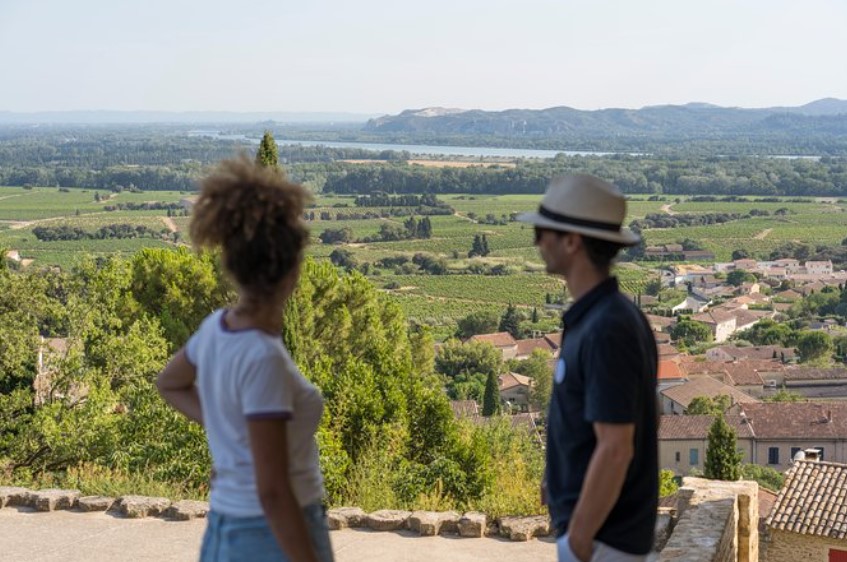
This tour, for small groups only, guided by another sommelier-trained expert, takes you through the scenic vineyards to visit select wine estates where you will taste the acclaimed wines and learn about the unique varietals of the area. The exploration also includes a historical tour of the Pope’s ancient summer retreat.
Book This Afternoon Chateauneuf du Pape Wine Tour and Countryside Experience
Where to Stay in Châteauneuf-du-Pape
Accommodation options in Châteauneuf-du-Pape cater to a variety of preferences, from quaint bed-and-breakfasts in the actual village to luxury hotels (or even castles, as we mentioned earlier) with outdoor pools. For a truly immersive experience, staying in the heart of Châteauneuf-du-Pape, such as at the Château des Fines Roches, allows guests to wake up to vineyard views and the rich history of the region. Many establishments are within a minute drive from the main attractions, ensuring ease of access while offering a serene retreat after a day of exploration.
Book Your Hotel Stay in Chateauneuf du Pape
Places to Visit Around Châteauneuf-du-Pape
Avignon
A UNESCO World Heritage site, Avignon is replete with historical landmarks, including the Palais des Papes, a testament to the city’s papal history. The blend of medieval architecture, vibrant cultural scene, and proximity to Châteauneuf-du-Pape make it a must-visit.
Orange
Known for its Roman Theatre and Triumphal Arch, both UNESCO-listed, Orange offers a dive into ancient history. Its well-preserved Roman monuments provide a stunning backdrop for history buffs.
Pont du Gard
This ancient Roman aqueduct bridge is one of the most impressive and well-preserved pieces of Roman engineering. It stands as a monumental reminder of the Roman presence in the region and offers stunning views and a unique historical perspective.
Dishes to Try When Visiting Châteauneuf-du-Pape
Daube Provençale
A rich beef stew marinated in wine, seasoned with herbs de Provence, and slow-cooked to perfection. This dish perfectly complements the full-bodied red wines of Châteauneuf-du-Pape.
Brandade de Morue
A savory emulsion of salt cod and olive oil, flavored with garlic and milk. This traditional Provençal dish offers a lighter pairing option for the white wines of the region.
A Bit of History on the Châteauneuf-du-Pape Wine Region
The name Châteauneuf-du-Pape, translating to “New Castle of the Pope,” is deeply rooted in the region’s rich papal history and its connection to viticulture. The term originates from the Latin “Castro Novo” from a document dating back to 1094, which referred to a fortified village rather than a castle. This name evolved over the centuries, influenced by the village’s development and its significant lime kilns, leading to the variation “Châteauneuf Calcernier.” The name “Châteauneuf-du-Pape” gained prominence due to the establishment of a papal residence in the 14th century by Pope John XXII, becoming the official designation in 1893. This shift underscored the profound impact of the papacy on the area, highlighting the region’s significance to the Avignon Papacy.1
The papal influence in Châteauneuf-du-Pape began with Pope Clement V, who moved the papacy to Avignon in the early 14th century, marking the beginning of a golden era for the region’s viticulture. It was his successor, John XXII, who truly transformed the village into a notable wine-producing region, designating it as the summer residence of the papacy and bestowing upon the local wine the prestigious title of “Vin du Pape” (Wine of the Pope). This recognition was not merely ceremonial; it catalyzed the expansion of the vineyards and enhanced the wine’s reputation across Europe. The wines from Châteauneuf-du-Pape began to grace the tables of the Palace of the Popes in Avignon, and through diplomatic channels, found their way to Italy, Germany, and Great Britain, thereby cementing the region’s reputation as a producer of exquisite wines.
Where is Chateauneuf-du-Pape Located and What Does the Wine Taste Like?
The wines of Chateauneuf-du-Pape (CDP) vary from full-bodied reds to rich and mouth filling whites and even some light–hearted Rosés. The CDP AOC is the largest single AOC in the southern Rhone valley in France. Bordered to the north by the northern Rhone Valley (CDP is equal in size to the total vineyard area in the northern Rhone); to the east is Gigondas and Vacqueryas; to the South is Provence and to the west, the Languedoc.
Although Chateauneuf du Pape is producing white wines, it’s best known for high quality full-bodied red wines. The white wines are made from a blend of a number of white grapes that are native to the Southern Rhone valley. White CDP stands out from the other white wines of the region for their age ability and high quality.
Chateauneuf du Pape Wine Grape Varieties
The red wines are like the white wines blends of which the Grenache grape is usually the highest proportion, followed by lesser amounts of Syrah and Mourvedre. Grenache is a relatively thin-skinned grape contributing soft tannins, red fruit and alcohol which is given depth and backbone from the thicker skinned Syrah with flavors of blackberry, cassis and pepper to which Mourvedre adds savory and gamey flavors and textures.
RELATED: Discover France’s Provence Wine Region – The Rosé Capital
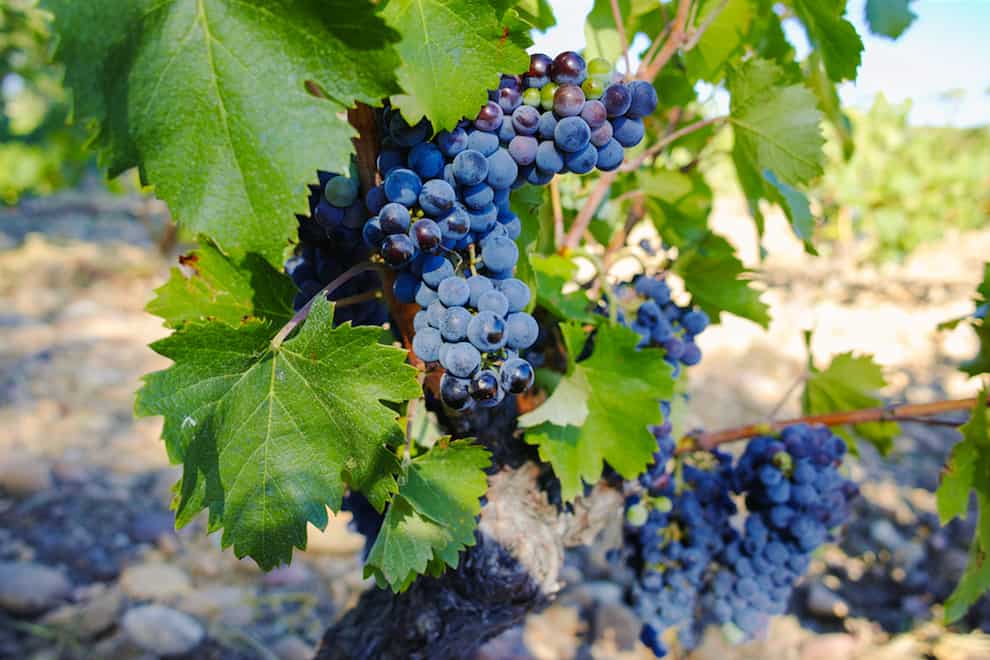
Interestingly there are up to a total of thirteen different grape varieties that are permitted in the CDP blend including, Cinsault, Terret Noir, Vaccarèse, Muscardin as well as some of the native white varietals that help to explain the incredible complexity and diversity of CDP.
What makes these wines stand out? –“C’est le terroir.” A combination of natural factors, wind and sun together with centuries of wine making tradition make these wines the most highly sought after, richest and complex wines not only of the region not only France but of the entire world.
The Terroir of Châteauneuf-du-Pape
Geological and Soil Diversity
Millennia of geological activity have sculpted the landscape of Châteauneuf-du-Pape, depositing layers of sediment that form the vineyard’s subsoil. The signature round pebbles, or “galets roulés,” which are remnants of Alpine diluvium polished by the Rhône River, play a pivotal role in the vineyard’s terroir. They not only retain heat, aiding in the ripening of grapes, but also prevent the onset of diseases by facilitating water evaporation. This area encompasses a variety of soils, including hard limestone rocks with clay subsoils, molassic sandstone to the west, and sandy soils to the east, enriched by the retreat of the Rhône. This diversity allows winemakers to either blend grapes from different terroirs2 or select a specific terroir for a particular cuvée, enhancing the complexity of their wines.
Climatic Influence
The climate in Châteauneuf-du-Pape, influenced by the Mediterranean, is characterized by intense sunlight and significant dryness in summer, with temperatures that can soar to 38°C (100°F). The region experiences scarce and irregular precipitation, with the Mistral wind playing a crucial role in reducing rainfall and thereby limiting vine diseases. This wind, by drying grapes after rain and preventing frost in spring through air currents, is invaluable in maintaining the health and quality of the vines.
The Wine and Vineyard Diversity
Châteauneuf-du-Pape is not only about its unique soil composition but also about the variety it embraces in viticulture and winemaking. The appellation stretches across 3,134 hectares and is predominantly known for its red wines, which make up 93% of its production, with the remaining 7% being white. The diversity is further enriched by the allowance of thirteen grape varieties, including Grenache, Syrah, and Mourvèdre, which contribute to the layered complexity of the wines. Each soil type, from sandy to clay and limestone, along with the iconic galets roulés, contributes uniquely to the wine’s character, aiding in perfect ripening and imparting distinct textures and flavors.3
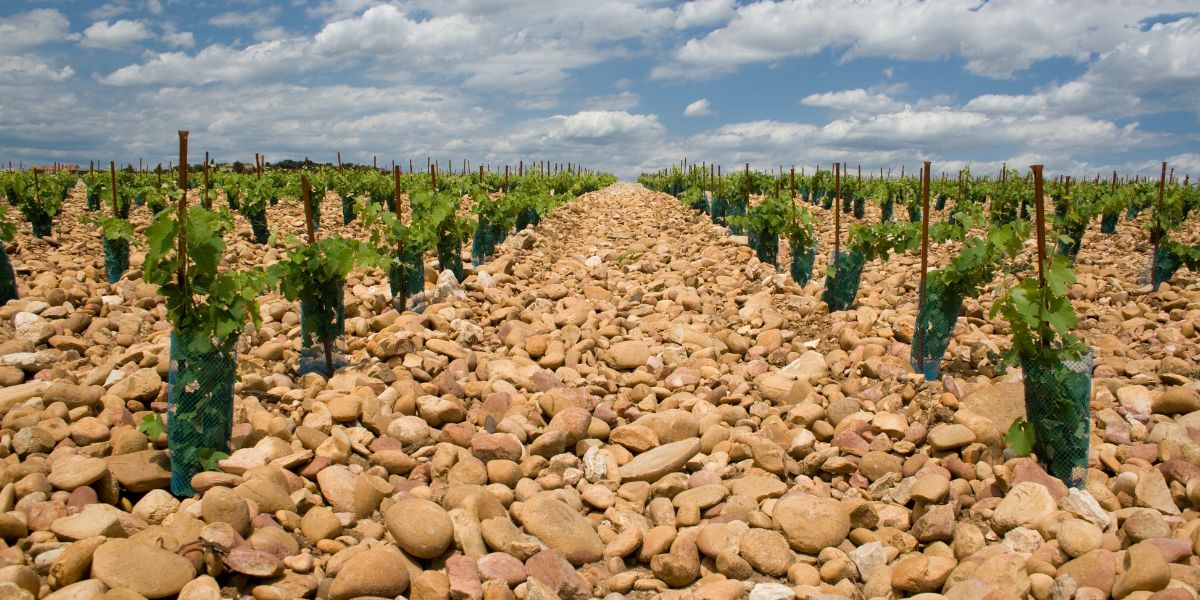
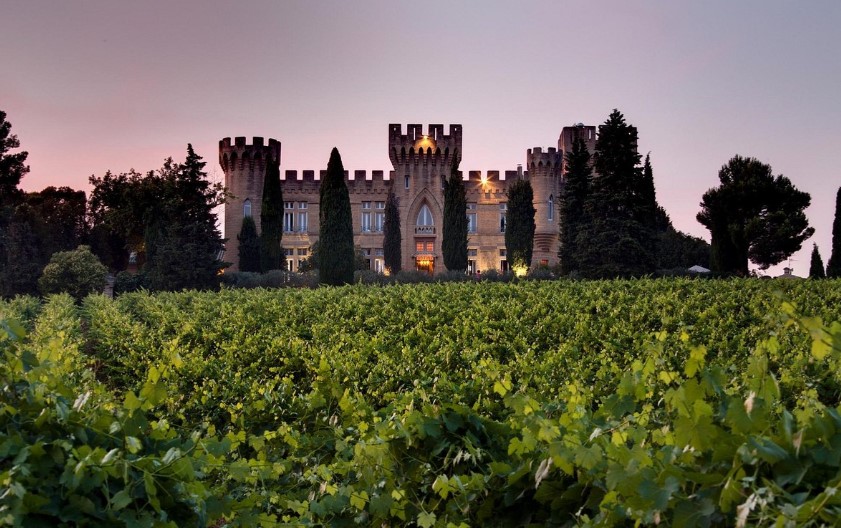
Andrew Hodson, thanks so much for the post.Really thank you! Great.